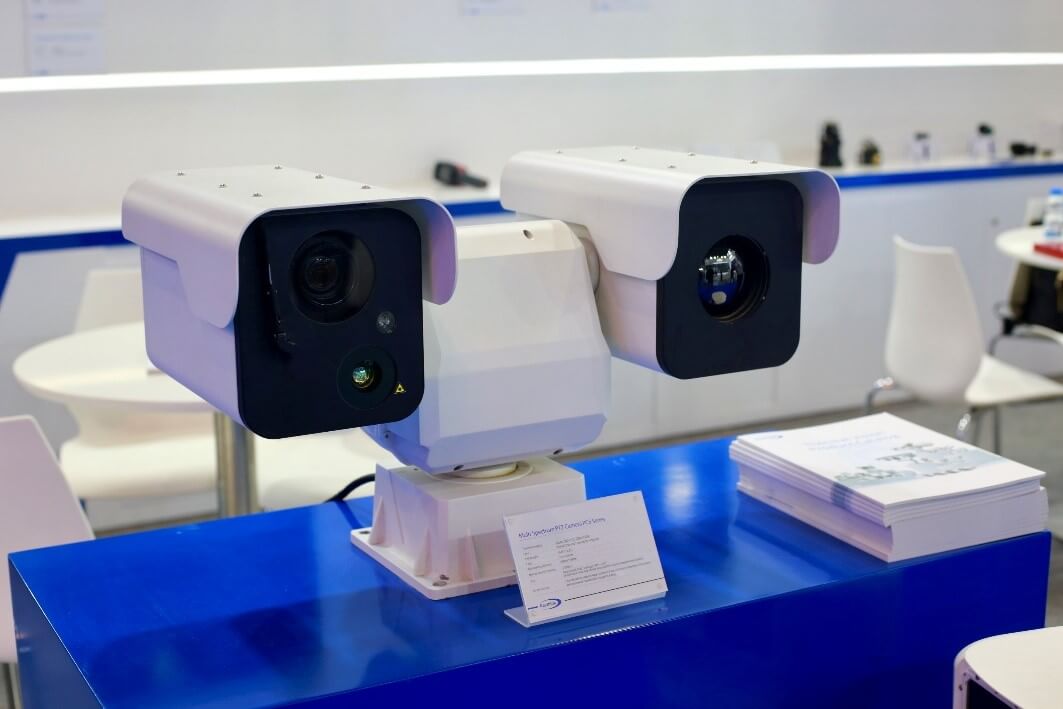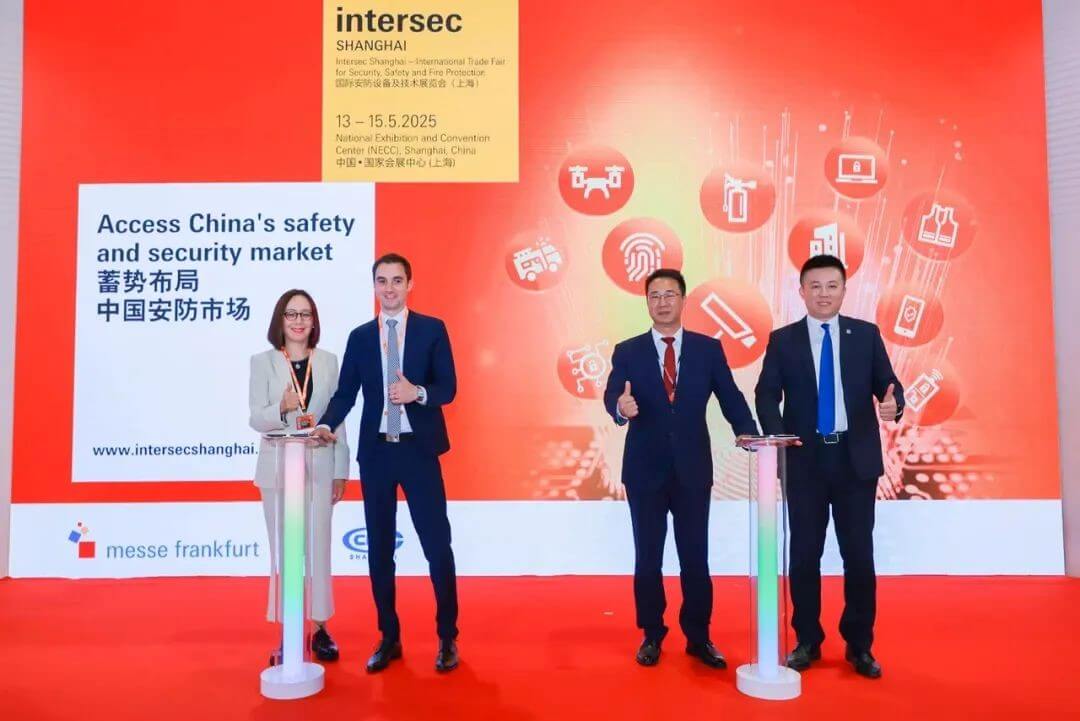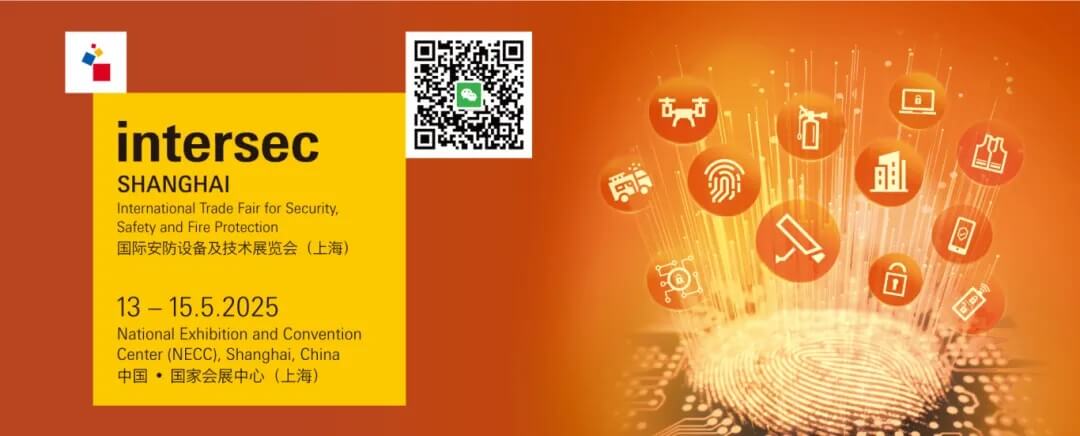During Intersec Dubai, a&s visited some representative enterprises. Through interviews with these companies, we gained a better understanding of the key exhibits and market plans of Chinese enterprises.
The world’s biggest business event mapping the future of security, safety and fire protection – the Intersec Dubai was successfully held at the Dubai World Trade Centre (DWTC) from January 14 to 16, 2025. 2025 marked the 26th year of Intersec. The three-day exhibition was the largest in its history, attracting 1,200 exhibitors from 61 countries and over 52,000 visitors from more than 140 countries.
At this year's Intersec exhibition, there were over 300 security, fire protection, and labor protection enterprises from China, showcasing the diverse products and technologies of Chinese companies. The exhibits covered a wide range of areas, including AI cameras, solar - powered cameras, infrared thermal imaging devices, drones, smart access control systems, anti-theft alarms, smart door locks, as well as fire protection, emergency response, and labor protection products.
During Intersec Dubai, a&s visited some representative enterprises. Through interviews with these companies, we gained a better understanding of the key exhibits and market plans of Chinese enterprises at Intersec Dubai. At the same time, we clarified the trend in the Middle East security market this year, providing information for enterprises looking to expand into the Middle East market.
This time, we had an exclusive interview with Raythink Technology, a leading thermal imaging technology provider. The following is the interview transcript:
Q: a&s
A: Martin, Overseas Sales Director of Raythink Technology
Q: What are the major products that Raythink Technology showcased at this year's Intersec Dubai?
A: This year, Raythink mainly presented the multi-spectral fusion series pan-tilt. This product uses the company's self-developed AI algorithm and the latest SoC chip. It can visualize data for scene - specific targets, such as accurately identifying and classifying targets like people, vehicles, drones, and animals, and then conduct targeted tracking based on these classifications.
This product has strong environmental adaptability. Ultra-long-range thermal imaging products are generally used for critical area security, often far from cities and towns. In the Middle East market, where the environment is hot and sandy, we have made some modifications and improvements to this device to meet the application requirements of the Middle East market. For example, we have adopted an advanced DLC film to prevent the lens diaphragm from being corroded and peeled off by sand and dust. At the same time, it also has a high-temperature early-warning monitoring function in high-temperature environments, which is highly demanded in the Middle East market. This is also the flagship product of Raythink Technology this year, and it is a product we plan to promote in the Middle East, Southeast Asia, and European markets.

Raythink Technology has always focused on breakthroughs in core technologies. Since 2013, we have continuously achieved innovative breakthroughs in the wafer size of detectors, from 35μm to 17μm, from 12μm to 8μm, and last year we achieved a breakthrough to 6μm. Currently, the wafer size of our detectors ranks first in the industry. At the same time, we have also advanced thermal imaging into the ultra-high-definition era. This year, we are trying to downplay the role of hardware and instead focus on empowering hardware through software. This is why we brought this product to the exhibition.
Q: Can we say that Raythink currently pays more attention to the user experience in the international market and has made a lot of optimizations for application scenarios?
A: Yes. When developing products for overseas markets based on application scenarios, in addition to considering environmental adaptability, we also need to think about ease of deployment. In the overseas market, if a product fails, it is usually difficult to directly disassemble the entire machine, and it is also troublesome to ship it back to China for repair. Therefore, we have adopted a modular deployment design. In this way, when the device malfunctions, only the corresponding module needs to be removed and replaced. The modular deployment of the product also facilitates local assembly by some overseas customers. Since some government projects attach great importance to local elements, after the product is modularized, some components can be replaced with local products by customers themselves, so as to better adapt to local policies.
Q: What are the main demands of Middle Eastern customers for Chinese products or the services provided by Chinese enterprises?
A: The Middle East market is highly inclusive, serving as a convergence point for high-tech products from the East and the West. In the field of thermal imaging, Chinese enterprises have grown rapidly in recent years. European and American manufacturers attach great importance to software-level application development and have done a great job in user experience, which is something we are learning. Why do Chinese enterprises often focus on price and configuration competition at the beginning but end up failing? In the past year, we have been constantly exploring in the Middle East, hoping to rely on the fair - competition platform of the Middle East market to continuously improve the software strength of our products, and then replicate the successful cases in the Middle East market to Southeast Asia and Latin America.
Q: Currently, the competition in the security market is gradually shifting from improving services to competing in software-related services, which also means the further popularization of AI applications. What is your opinion on the acceptance of Chinese AI applications in the Middle East market?
A: To a certain extent, the AI application in the Middle East market is still in its infancy. However, from another perspective, it may be difficult for Chinese enterprises to start from scratch, but once they find a breakthrough point, they can grow rapidly. Currently, we are more focused on visualizing the application of thermal imaging technology to achieve target classification and recognition. At the same time, we are working on fusing thermal imaging and visible-light images, which is a clear future development trend. At present, many substantial breakthroughs have been made in thermal imaging - related technologies, and the fusion with visible - light technology will also drive the application of camera devices in more scenarios.
Q: Currently, in the Middle East region, in which industries and scenarios are Raythink’s thermal imaging products mainly applied?
A: Raythink Technology mainly focuses on the applications in industries such as petrochemical, industrial temperature measurement, border security, and port security in the Middle East region. For example, in the industrial manufacturing field, thermal imaging technology can monitor the temperature of production equipment and diagnose faults, helping enterprises to detect potential problems in equipment in a timely manner and improving production efficiency and product quality. In the energy industry, thermal imaging technology is crucial for the safety monitoring of the extraction, transportation, and storage of oil, natural gas, and other energy sources, which can effectively detect security risks such as leaks and overheating. In the field of critical area security, such as ports or other special areas, we integrate the data of long - range radar and multi-spectral thermal imaging devices to meet the application requirements of command and dispatch.
In the past two years, our company has had overseas projects for these devices, and they have performed quite well in the Middle East region. This year, we look forward to making further progress. At this exhibition, we also brought some gas detection devices to better meet the business - scenario requirements of petrochemical industry customers.
Q: Besides the Middle East market, which other overseas markets does your company pay more attention to?
A: Currently, both Chinese and European-American enterprises mainly focus on application segments such as security and industrial temperature measurement in the monitoring business. In overseas markets, we can also pay more attention to regions such as Latin America, South Africa, and Australia. The energy mines in the Southern Hemisphere represent a huge market. Since these are resource - based countries, thermal imaging has natural application advantages and opportunities in the energy-mine field.
Q: What are your main expectations for this exhibition?
A: Through participating in the exhibition, we hope to obtain more feedback on customer needs. In the past, our company mainly focused on continuous breakthroughs in hardware equipment and performance improvements. However, in the era of artificial intelligence, we want to enhance the user experience at the software level based on customer needs.
Q: What experiences and suggestions do you have for enterprises looking to expand into the Middle East market?
A: It is obvious from this Intersec exhibition that the overseas expansion of Chinese enterprises is a major trend. However, for thermal imaging enterprises, thermal imaging products and technologies, which are dual-use for military and civilian purposes, are closely related to the international development situation and political environment. Thermal imaging enterprises must understand the local political system and business environment before going global. Some markets may seem prosperous, but foreign brands may struggle to adapt. Therefore, enterprises need to be well-targeted when going global.
Intersec Shanghai 2025 is coming
From May 13 to 15, 2025, the Intersec Shanghai will be held at the National Convention and Exhibition Center (Shanghai). Intersec Shanghai focuses on digital product technology and innovative applications in major security industries such as security, fire protection, emergency response, and labor protection. It provides a one-stop display of application innovations in security prevention, emergency management, safety production, disaster prevention and mitigation scenarios empowered by digital technology, and is committed to becoming a commercial and trade expo leading the trend of digital innovation in the international major security industry. Intersec Shanghai is not only a platform for showcasing technology and products, but also an important opportunity for global security, fire protection, and labor protection industry practitioners to exchange and cooperate, and expand their business. We believe that with the promotion of Intersec Shanghai and Intersec Dubai, the global security, labor protection, and fire protection fields will usher in more vigorous development.
 Intersec Shanghai Exhibition Consultation
Intersec Shanghai Exhibition Consultation

Messe Frankfurt (HK) Ltd
Mr. Jack Ho
Tel: +852 2230 9294
jack.ho@hongkong.messefrankfurt.com
Messe Frankfurt (Shenzhen) Co Ltd
Mr. Luffy Zhong
Tel: +86 755 8299 4989 ext.601
luffy.zhong@china.messefrankfurt.com